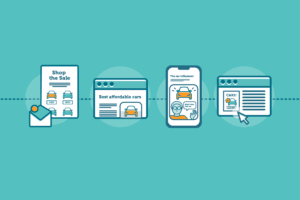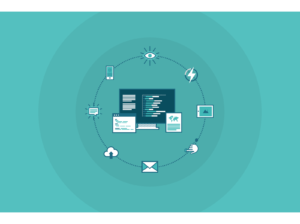How to Get Your Content Seen Online: 3 Steps Using Psychology Tactics

We all know that sometimes link building and content distribution can be tricky - anyone who says otherwise is telling a mighty fib! Battling against the masses of content and other agencies out there to get a reader’s or journalist’s attention can be no easy feat.
So what should you be doing to try and get your content seen online? For effective content promotion, I would argue that we need to tap into some simple, yet successful psychology methods and tactics.
The link between psychology and PR goes all the way back to the 1920s when Edward Bernays, Sigmund Freud’s nephew, made the connection. Edward realised that in order to get through to people, we need to be tapping into their subconscious emotional desires.
A modern day theory of how our brain operates states we have two systems:
- System 1 - is fast thinking, impulsive and based on emotion
- System 2 - is slower, it takes more time and is more logical and deliberate
For effective content distribution and to see links coming through, we need to be tapping into system 1 - hitting our audience’s and readers’ emotions. But how can we do this?
In this post I am going to explain the 3 steps needed to do this in your content, your outreach and also through your emails.
Step 1: Using psychology in your content
For your content to be tapping into system 1 of the brain you need to ensure it has an element of fluency - which is the ability to read easily at speed. Content that has good fluency tends to do well, as quite simply, it is easy to read and digest. If a piece of content or information is too difficult to read and digest, it will be tossed aside.
Similarly, you need to ensure your content has perceptual fluency, which is the ease of identifying characteristics e.g. colours or shapes. To achieve this you simply need to keep the content as simple as you can, reducing visual clutter and using symmetry to make it aesthetically pleasing. This can make all the difference to a journalist or a reader, system 1 of the brain will engage when looking at content and will quickly decide if they like it or not.
Top tips for fluency and perceptual fluency in your content are as follows:
- Easily readable fonts
- Symmetry
- Strong contrasts
- No waffle
Another tactic you can use in your content is emotional contagion: a process by which the content influences the emotions of others. If your piece of content carries some sort of emotional charge, for example if it is nostalgic, it is likely to resonate better with readers.
Step 2: Using psychology in your outreach
You can tap into system 1 in your outreach via your press releases. As mentioned, system 1 is emotional and fast thinking; to utilise this in your press releases you can use case studies. This is because they are relatable to the reader, who can see themselves within the story and often feel empathy, thus tapping into system 1 and the emotional side of the brain. The reason case studies do this so well is due to a method called homophily, which means the likeness of the same, the tendency for people to have ties with others who are similar to themselves in socially significant ways.
To really utilise the opportunity of homophily, you can tailor your case study to the journalist or site you are trying to get content promotion on. By using tools such as PAMCO you can find out the site’s target demographics and gender, allowing you to tailor your case study accordingly.
Doing this helps ensure your case studies are socially relatable to the readers, engaging them more deeply.
Step 3: Using psychology in your emails
Where the content allows, try and use some form of emotion in your email subject headings in order to spark a knee jerk reaction from a journalist.
Headings like this are devoid of emotion: 10 Ways to Save Money
However, if you use trigger words such as ‘weird’, ‘surprising’, ‘outrageous’ or ‘essential’ you are instantly injecting some emotion and intrigue into your subject headings to tap into system 1, enticing the journalist to open our email and read the content.
Whilst such titles may seem clickbaity, that is exactly why they work - they peak your interest by tapping into system 1.
Whilst it may seem like an old school way of doing things, it works, and hopefully these steps and top tips will help you get your content seen online.
If you’d like to learn more, read our article on how to plan a content-led digital PR strategy, or fire us a question over on Twitter.






